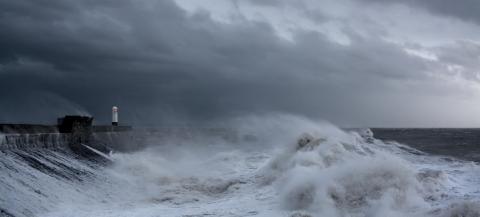This theme sought to provide a step change in capability and filling of knowledge gaps to enable robust characterisation and quantification of hazards and risks, including how they are communicated within the research communities and more widely. This was done through activities relating to three sub themes:
Climate-related hazards
Whilst there are many evolving methods for looking at present day hazards their robustness and intercomparability are not well understood. As many stakeholders start their engagement through considering their current risk, the Government has highlighted this as an important research area. A major task is to significantly improve understanding of present day hazards through progress in interpreting and using observational data and a variety of modelling approaches. This task includes detailed evaluation of specific methodologies, such as the UNSEEN[1] approach or using other long-simulations of the historic period, as well as the development of new techniques.
Through UKCR, new work was commissioned to provide better information on future change for different lead times (from a season ahead to many decades or more) with particular emphasis on extending methods to provide decision-relevant scenarios, including better addressing the most extreme changes and plausible worse-case scenarios. An increasing body of decision and adaptation literature has highlighted both a need for such scenarios (e.g. for sensitivity testing) and a lack of research producing them. The CCRA and adaptation reporting power gap analyses also highlight a need for new understanding of multiple hazards occurring in a short space of time and factors affecting the repeat of hazards. The research on climate hazards included both new quantification of hazard as well as improved understanding of the mechanisms causing the hazards.
Climate-related risks
There is a need for better and more usable translation of hazard information into risks. In many cases there will be a requirement to convert the hazard from climate/weather metrics into more relevant impact metrics, e.g. river flows. It is necessary to combine the hazard with vulnerability and exposure information to produce risk estimates, such as the number of people flooded with and without particular adaptations. The impact and risk metrics will be sector specific and may be location specific. The risks considered should focus on the UK but should also take account of remote climate change on UK exposed sectors (e.g., food, finance, security, etc.) – transboundary climate risks. Monitoring is expected to play a role and there is scope for research on enhanced monitoring, for instance using novel approaches to earth observation. In order to characterise future vulnerability and exposure, this programme developed a consistent set of socio-economic scenarios for the UK, on a spatial scale that is appropriate to risk quantification and resilience building and which include population and technological change. These are traceable to international scenarios, such as the Shared Socio-economic Pathways used in the latest IPCC assessment.
While progress has been made in assessing climate-related risks in recent years,[2] several user-driven challenges remain as identified by the Adaptation Committee. Enhancing climate risk and adaptation assessment capability is of national importance. A step change in research capability is needed to improve: UK spatial modelling that is able to link different sectors together (e.g., natural environment, human health and infrastructure) and shows the geographical distribution of risks; the characterisation of interdependencies between sectors and risks; and the representation of adaptation strategies in models and assessments. This programme sought to lay the foundations for the development of integrated assessment modelling capability in climate change risk assessment for the benefit of future CCRAs and NAPs.
Risk perception, tolerance and communication
The inclusion of climate risk into decision-making varies in sophistication between stakeholders, with many examples of users not able to maximise the value of the climate information. There is also substantial evidence that understanding people’s perceptions of climate-related risks is essential when developing policy to manage them, e.g. by influencing individual and group behaviour. New research sought to focus on understanding how climate hazard and risk can be better communicated and more effectively used in a range of decision support frameworks for risk assessment.
Suitable communication approaches will need to be developed and tested that allow the communication of risk information across the different research communities involved in this programme, to practical users of the programme output, and to the wider community, focusing e.g., on coastal risks, flooding, water scarcity and overheating. A particular challenge is to better quantify current and evolving weather and climate risk attitudes in the UK amongst different publics and different sectors. For climate resilience this must take account of the interaction of messages and policies on both mitigation and adaptation. It is also necessary to produce new understanding of how individual risk perceptions can contribute to a UK tolerance for risk, taking account of how conflicting information and ethical dimensions are treated. Research in this programme sought to go beyond previous studies to understand not only trends in risk perception but to provide more information on the drivers of these views for different stakeholders. The practical use of this research will be important in the climate service demonstrators where research findings can be applied in particular impact domains.

